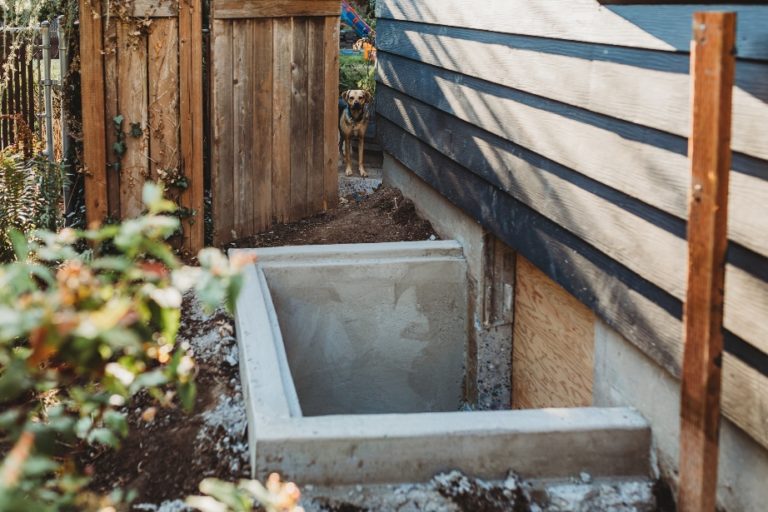Picture this: You’re home alone, binging your latest tv obsession when you hear some unidentified creaks and thumps in the night. You first confirm the noises aren’t hallucinations brought on by watching 6 straight hours of true crime documentaries. So what are they?
Chances are the sounds you are hearing are your home settling … or ghosts 
What is settling and why is it happening?
Settling is the term used to describe when home gradually sinks into the ground over time. While it may sound a little scary, settling is actually normal. In fact, the first few years after being built, a home will typically settle as much as a few inches.
Some reasons a home may settle are:
- The weight of the home is pressing the soil down
- The soil under a home contains a lot of clay, which expands and contracts
- The foundation, which contains a lot of water, is drying causing it to shrink slightly
- Extreme weather conditions, particularly those that cause an influx of water
Remember, settling is usually no need for alarm. In fact, you may not even notice it happening. Even so, it’s important to know the difference between normal settling and issues that may signify a larger foundational problem.
That’s where basic maintenance and problem-solving come in. Most foundation problems develop slowly, so with just a little of both, you’ll keep your foundation strong and catch issues early.
How to Inspect and Maintain Your Foundation
With some regular attention, you can help your foundation to stay strong and water-resistant.
- Take a close look at your foundation at least once a year
- Remove moss, lichens, vines, and mold, which can cause damage
- Repair any material that’s loose or crumbling, such as mortar, bricks, or concrete
- Fill any small, vertical hairline cracks
If you consider yourself maintenance savvy, these kinds of small repairs shouldn’t require a professional. You’ll want to consult a pro about anything bigger, though.
Remember as you are going through these steps, never pull loose bricks, stones, or blocks out of your foundation. Repairing mortar is one thing. Yanking on even a little piece of what’s holding up your home is another!
Signs of stress: Most foundation problems are visible so with a sharp eye, you can catch issues early. Any of the following could be considered warning signs:
- Cracks or buckling in the foundation
- Cracked walls or floors, or slanted floors
- Leaning or cracked chimneys
- Windows and doors that stick or don’t open right, even when humidity is low
- Gaps around window frames or exterior doors
- A door that stops latching as easily as it used to
- Sagging, bowing, or suddenly squeaky floors
- Counters or cabinets separating from the wall
- A damp crawlspace or basement
- Spalling, or flaking, on basement walls
Pro tip: Diagnosing foundation cracks
Vertical cracks of 1/8 inch or less are pretty normal. Larger, horizontal, or angled ones are more concerning. Horizontal cracks can signal pressure on the foundation. Angled ones can signal shifting.
How to Fix Poor Drainage
Water is a foundation’s worst enemy. Too much can eventually weaken it. And according to home inspectors, many, many homes have poor drainage in the yard.
Have you noticed that water regularly pools around your foundation? Here are some ways to stop that.
Gutters: So simple, yet so important. Gutters help limit your foundation’s exposure to water and most homes really need them.
If you don’t have gutters, look into installing them.
- Inspect and clean gutters regularly
- To make maintenance easier, consider gutter guards, which keep out leaves and other debris
- Use downspout extensions to direct water farther away from the foundation
Grading: The “grade” is the level of the ground. For drainage, your yard should slope away from your foundation, dropping 5 to 10 inches over 10 feet.
To create a nice slope, you might need to regrade — reshape the earth. Many landscaping companies offer grading as a service.
Trench systems: Is there a ton of water in your yard on a regular basis? A trench system moves it away from your foundation. Foundation companies can install them.
There are two basic types:
- French drains collect groundwater that accumulates below the surface
- Surface drains collect water that pools up against the foundation; they’re good in flood-prone areas
Be ready for drought
While excess water is the most common threat to foundations, too little can cause problems too. Soil can get so dry that it pulls away from the foundation which can then start sinking.
In drought-prone areas:
- Maintain plants and mulch around the perimeter of the foundation to help keep the soil moist
- If a gap opens between your foundation and the soil, water the soil until it swells to close it
Act fast on concerns
If your foundation shows signs of stress, hire a structural engineer to assess the situation. Look for “PE” (professional engineer) licensure. Structural engineers analyze and design buildings and other structures. They don’t build or repair them. Do you really have a problem? How serious? What’s the right way to repair it? An engineer will have the answers.
It might be tempting to go for a free estimate from a repair contractor. Keep in mind that, unlike an engineer, they could be biased by wanting the repair work.
Tip: Get a warranty for foundation repairs
Any major foundation repair should come with a transferable lifetime warranty. Besides peace of mind, that means you can pass it on to the next owner. A nice plus if you ever sell.




